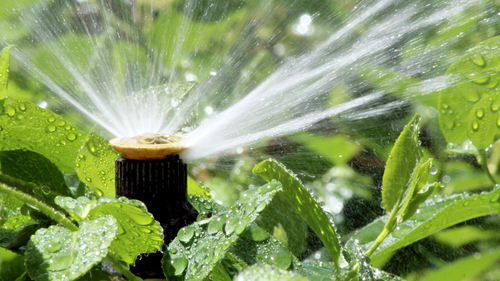About Watering Lawn After Mowing
Engaging in watering lawn? As the weather heats up, more people will be venturing out into their yards to mow, plant, trim, and generally get things spruced up. Mowing the lawn becomes an almost constant chore from the time the dandelions pop up in the spring until the leaves fall in the autumn. Whether you choose to mow your own lawn or hire experienced professionals, you may have some questions about watering your lawn after mowing.

Setting a Schedule for Mowing
While mowing and watering are two separate chores which should both be scheduled, it’s important to leave room for flexibility for the days of drought and when it pours. The lawn needs mowing when the grass reaches a certain height and watering when the grass is dry. Those two events may or may not occur at the same time. Establishing a schedule to address these needs will help you make sure you aren’t wasting water or time. You should mow when grass reaches a height of about 3 to 4.5 inches. When it’s tall enough, trim it to about 2 to 3 inches. Depending on the season and type of grass, you may need to schedule mowing as often as every 5 days.
Setting a Schedule for Watering
Schedule your watering so that grass gets about 1.5 inches of water per week during the growing season. Time of day is also important to consider. Morning is an ideal time to water because it allows the grass to soak up the water before the heat of the day. Watering in the middle of the day wastes water because the sun speeds evaporation. In addition, watering too late in the day leaves insufficient time for the water to soak in before it cools off at night, potentially leading to fungal growth or other disease.
Knowing When to Water by the Color of Your Grass
Determining that grass needs water is a little tricky, but there are some things to look for. Grass that fades from bright green to a dull, bluish gray is probably thirsty. Also, look for signs of wilting, such as curling grass blades. Another trick is to look for footprints in the grass after you’ve been walking in the yard. Hydrated grass will spring back more than dried grass so, if you can see that you’ve left a trail, it’s time to water. One foolproof way to know if your grass needs a drink is to use a simple moisture meter, available at many garden stores. Or, utilize a rain gauge so that you know how much natural precipitation has fallen during the week.
A Pristine Lawn Takes Time and Attention
So, should you water after mowing? The simple answer is yes, but only if your grass needs the moisture. If you’ve had a rainy week and the grass isn’t showing footprints or other signs of dehydration, you can probably put off watering for a bit longer. If your lawn does need to be mowed and watered, make sure you schedule it for early in the day to avoid moisture evaporation and problems with disease. Don’t water your grass before mowing. Wet grass tends to clump together on the lawn which could suffocate the grass underneath or promote fungal growth. Also, it could clog up your mower.
Mowing is an essential aspect of home maintenance. A freshly-mowed lawn looks great, feels wonderful on bare feet, and helps keep invasive weeds in control. To handle all of your mowing needs, get in touch with the professionals at DK Landscaping today. You can trust us to keep your yard looking great for all seasons.
Tagged: DK Landscaping, landscape, lawn care
Both comments and pings are currently closed.





